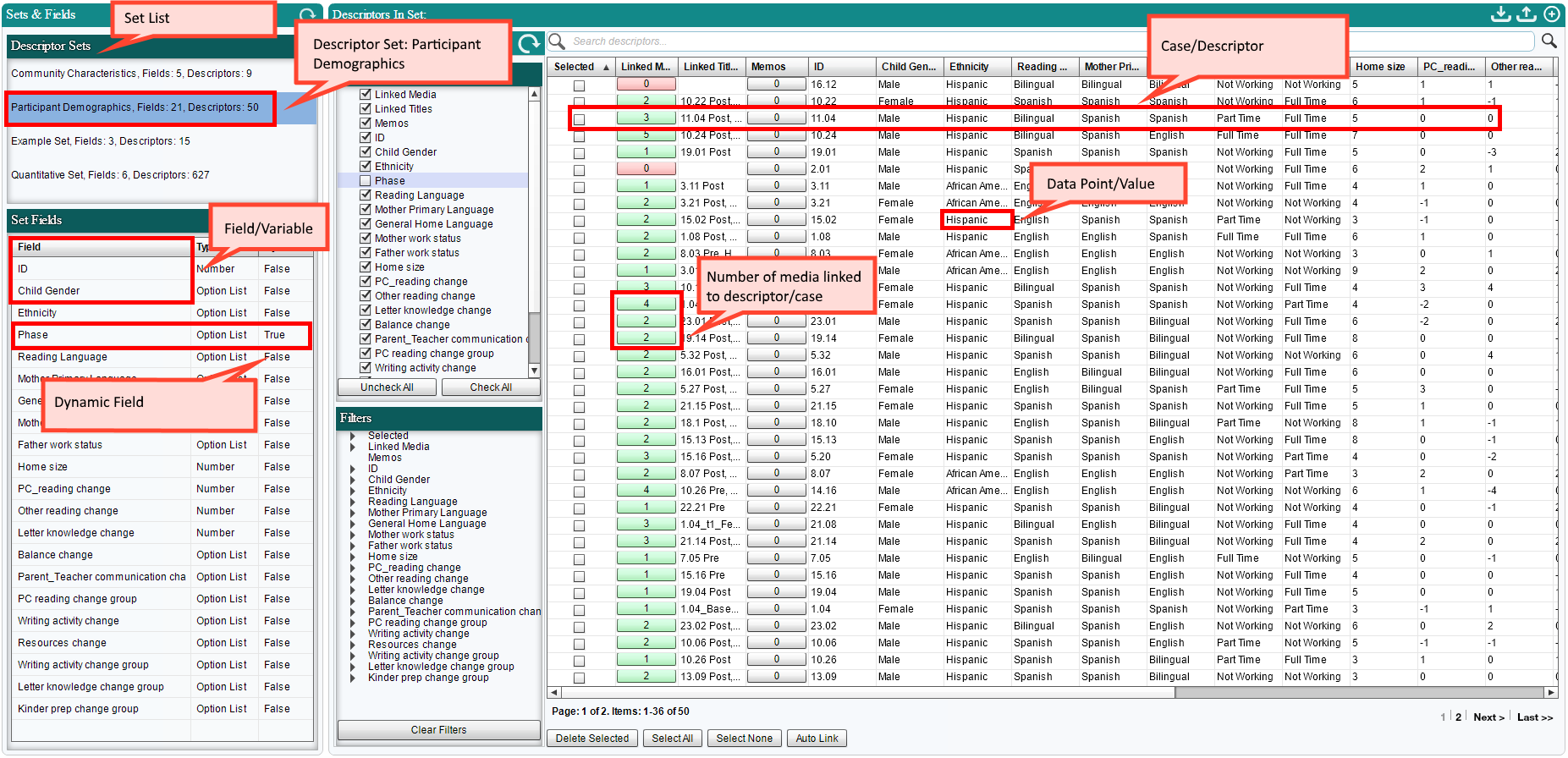
Article: Descriptors in Dedoose: The How-To Series
Tags
- All
- Training (4)
- Account Management and Security (9)
- Features of Dedoose (9)
- Dedoose Desktop App (1)
- Dedoose Upgrades and Updates (5)
- Dedoose News (6)
- Qualitative Methods and Data (11)
- Other (5)
- Media (5)
- Filtering (5)
- Descriptors (10)
- Analysis (22)
- Data Preparation and Management (20)
- Quantitative Methods and Data (5)
- Mixed Methods (20)
- Inter Rater Reliability (3)
- Codes (26)
- Tags:
- Descriptors
7/7/2013

Using descriptors in your qualitative or mixed methods study allows you to break out the work you’ve done with your qualitative data based on information that distinguishes the sources of your media files, such as participant demographics, so you can introduce new dimensions to your analysis. That means that if you use descriptors you can look not only at the emerging themes, but how the data captured by these themes may vary as a function of gender, age, location, etc. And since Dedoose allows for multiple sets, or levels, of descriptors you can add as much depth to your analysis as your study needs.
Descriptors, while incredibly valuable to a mixed methods study, can be confusing to those just starting out. That’s why we created a Descriptors Series on our blog. Below you will find a brief overview of topics surrounding the Descriptor Workspace you can get to know and use descriptors effectively.
Part 1 - The Lingo - An Introduction to Those Devilish Descriptors

In Dedoose, descriptors are sets of information you use to identify and describe the sources of your resources/media (e.g., documents, video, audio, images). Generally, descriptors are the characteristics of the participants in your research (e.g., individuals,dyads, families), but can also be descriptions of settings in which observations are made (e.g., stores, schools, neighborhoods, cultures). The descriptor fields and variables that comprise each descriptor set may include demographic information, dates, scores from survey measures, test results, and any other information you gather that is useful in describing and distinguishing the source of your media—essentially your level(s) of analysis. Once you upload or manually add in your descriptor information, you ‘link’ each source with the corresponding media. This article will show you the descriptor basics.
Part 2: How to Manually Create Descriptors
In this article we will explain how to create descriptors manually within Dedoose as it will help you bring the concepts you learned in Part 1 of our descriptor series to life. Manually creating fields and descriptors is helpful when you have smaller data sets. NOTE: You can also import your descriptor set using Excel. To learn how, visit our User Guide on descriptors.
Descriptor Series Part 3: Dynamic Descriptors – Mixed Methods Approach to Tracking Change Over Time

When your research calls for speaking to the same participants at multiple time points, you need to quickly and easily identify the phase at which each interview belongs. This is where dynamic descriptor fields come in. In addition to sounding cool —‘dynamic,’ ‘ooooooh’—this mixed methods component of Dedoose increases research efficiency and effectiveness by helping you quickly visualize, organize, and identify aspects of your data that expose variation across time. For example, how qualitative responses change as a function of the pre/post phase of an experimental study or chronological shift in a multi-time point longitudinal project.
Part 4: Adding/Editing Descriptors Via Excel
Using the features in Excel to add descriptor data (link to #1 in blog series) can save you a great deal of time in your mixed methods or qualitative data analysis. Rather than adding a field and manually going through each case to add or edit information, you can make edits and editions via excel and then re-import your data quickly and easily back into Dedoose…all without disturbing the links to media you have already established. Please hold all applause until the end of this article!
Need More?
There are other resources to help you with your descriptor woes!
We have a great User Guide that outlines the concepts and use of descriptors. And, if you are more of a visual learner you can check out our video guide of the Descriptor Workspace.
What is your favorite thing about descriptors? What have you learned in your projects when working with descriptors? Leave us a comment!